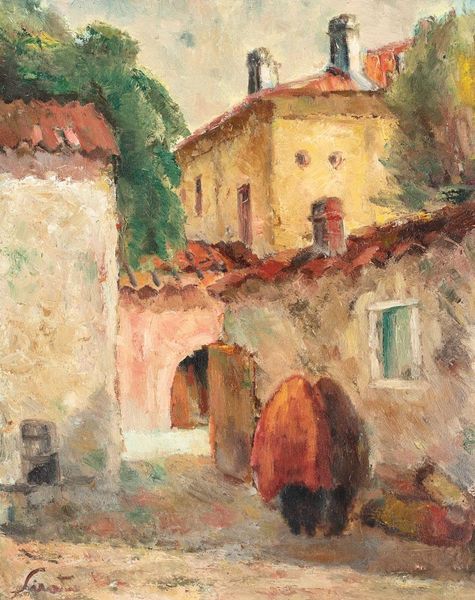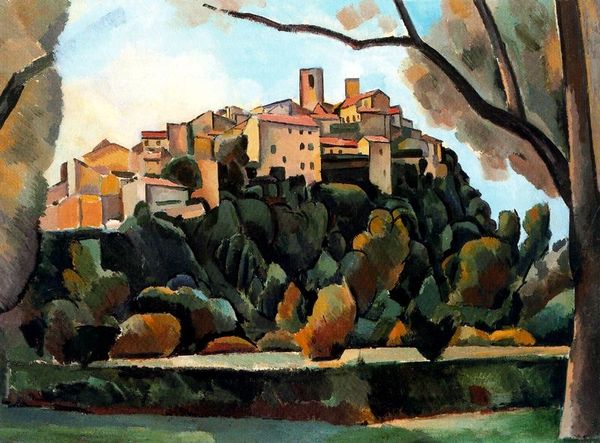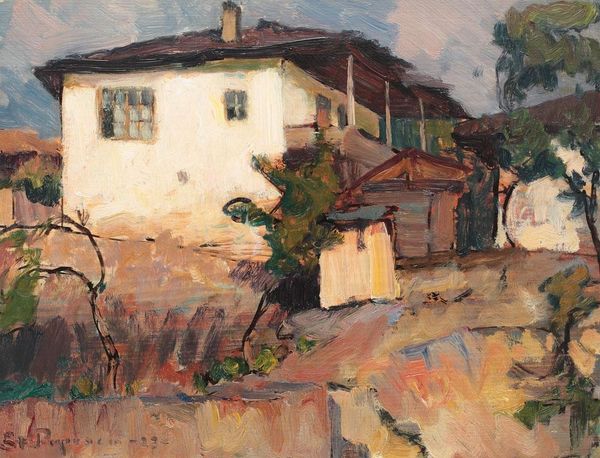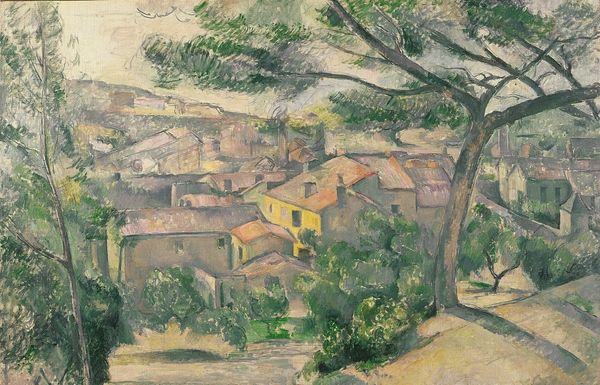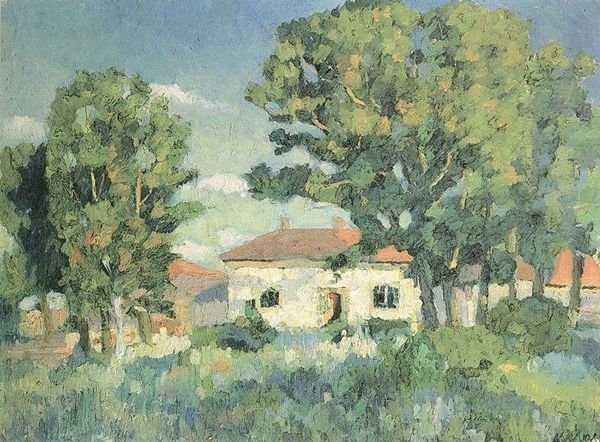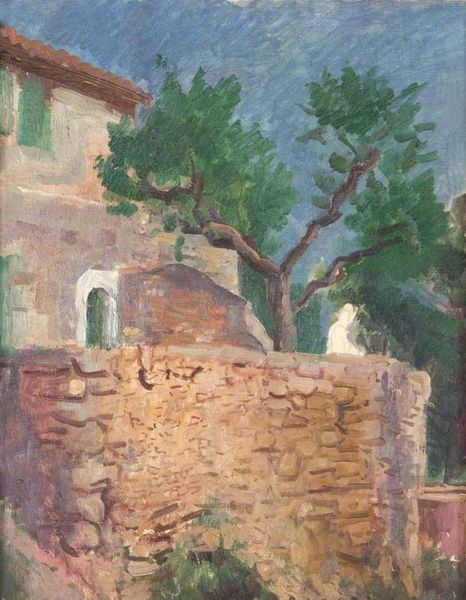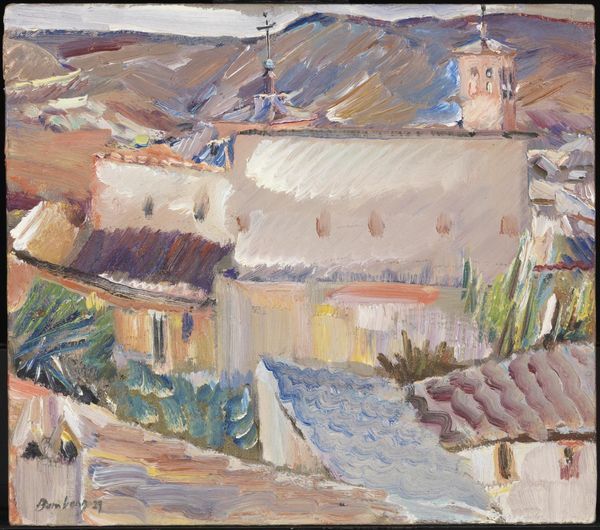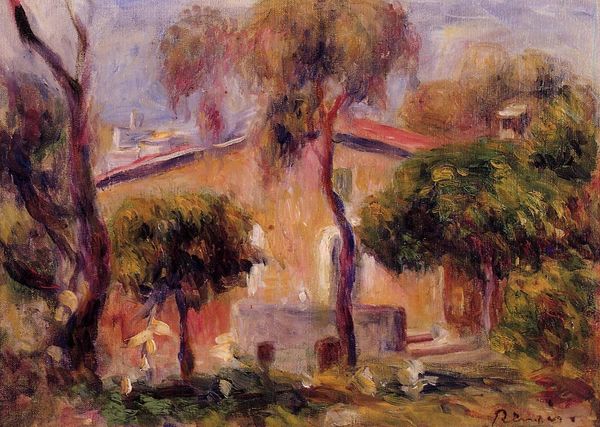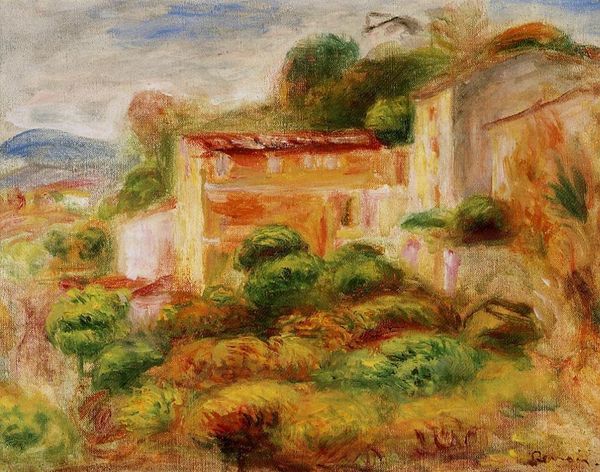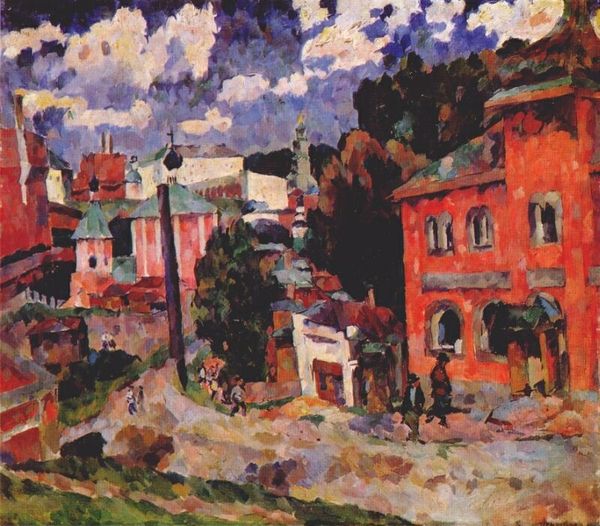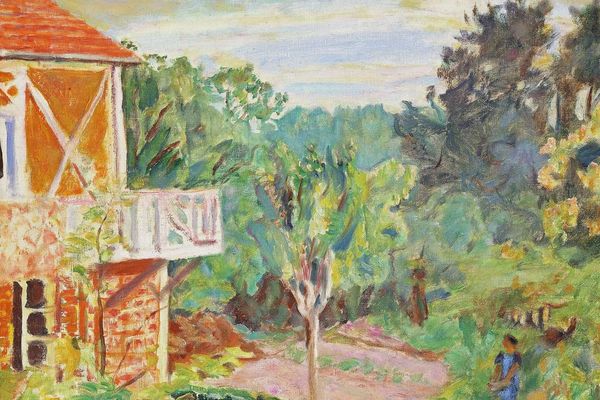
Copyright: Public domain US
Curator: Alright, let's talk about Diego Rivera's "The Outskirts of Paris," painted in 1918 using oil on canvas. What are your first impressions? Editor: Quiet and a little brooding, honestly. It feels like the memory of a place, maybe slightly idealized or melancholic. The colours are muted but warm—ochres and faded reds under a pale sky. What about you? Curator: It whispers to me of artistic migration, really. Rivera was in Paris during this time, absorbing the late waves of Post-Impressionism. You can really see it in the brushstrokes and composition. Notice how he frames the buildings with the strong, almost geometrical forms of the walls and trees. There's a structural underpinning that speaks to a more analytical approach. Editor: Definitely, I see what you mean. It's interesting how he simplifies the architecture, turning the buildings into blocks of colour, almost like Cezanne's influence bleeding through. It seems a touch atypical for what most people associate with Rivera. It's as if he's grappling with European modernism before returning to Mexico and embracing muralism. Curator: Precisely! There is an interplay here—the push and pull of assimilation and personal style. The setting, too—the "outskirts"—feels significant. It is not the monumentality or grandeur of Paris, but the periphery. Perhaps echoing a sense of being in-between, a foreigner looking in. It invites you to contemplate how artists redefine "home" in their work when physically displaced. Editor: You know, when I look closer, it seems the red of the buildings’ trims and that bold wall anchors it. Visually it holds the whole piece down to earth—reminding us it’s a real, solid place. Yet at the same time, there is this fleeting quality in the sky and the loose foliage, adding a dreamlike transience. That combination is quite powerful! Curator: The beauty of this "Outskirts" resides in this paradox, I think. Rivera’s early Parisian explorations shaped his evolving vision. He synthesized elements from cubism, Post-Impressionism and Mexican folk art into a new aesthetic language which ultimately found its voice in social and politically conscious murals. Editor: Right. A quiet crossroads. A crucial pause. It's funny how a place on the periphery can become a focal point.
Comments
No comments
Be the first to comment and join the conversation on the ultimate creative platform.
